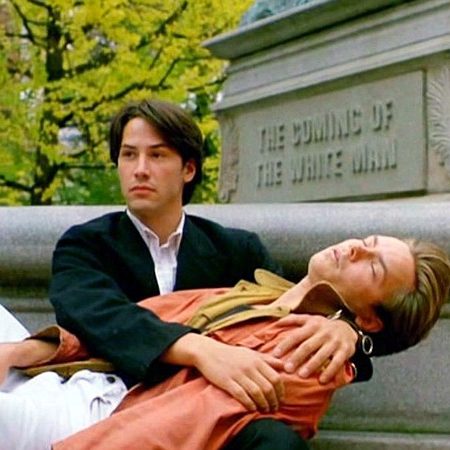Prodded by the excellent Brad Luen, who compiled his own list of 19th century fiction, I said the hell with my objections to list-making. No vaccine yet, right? Life’s short. I’m pleased he admires Thomas Hardy as much as I do; we picked the taut, practically airless The Mayor of Casterbridge, but my rule against including more than book by the same novelist applied. Thanks to a Melville kick sustained since a former student bought me a copy of Moby Dick a decade ago, I’ve worked through Typee, the putatively difficult Confidence Man, and, as of December, the uneven Civil War poems collected in Battle Pieces (the stories collected as Piazza Tales I got assigned ing grad school). I’ve dipped into his epic poem Clarel, impossible to find outside libraries until Library of America’s estimable collation published in 2019. Instead of consensus pick Moby Dick, I chose queer-every-which-way Redburn, which endeared itself to me when the title character, a charming American merchantman, arrives at Liverpool and ends up at Aladdin’s Palace, a men’s gambling house doubling as sex club — take that, Hawthorne!
Novels developed out of a leisure class that could subscribe to lending libraries and pay for the magazines selling the monthly installments read by women. The poorer and less literate a country, the more fallow its novel-writing tradition, though czarist Russia, with its Francophile fetishism may count as an exception. Novels about money and property, with marriage as the unguent, fascinate me: Jane Austen, sure, but the nine or ten Anthony Trollope bricks I’ve enjoyed since 2011, with Phineas Finn one of the rare period peeks into the machinations of Parliament. Momentum and a forensic eye compensate for the sameness of his characters. Elizabeth Gaskell’s North and South offers similar insights into the Mancunian proletariat. Patted on the head by longtime pals Henry James and Mark Twain, consigned to secondary status by early 20th century critics like Alfred Kazin, William Dean Howells will never own a secure place in any canon that manages to survive perpetual obsolescence. The Rise of Silas Lapham (1885) and A Hazard of New Fortunes (1890), the latter a central part of my master’s thesis, still get assigned; they’re astute on work and capital, but today gimme A Modern Instance for a depiction of a marriage breakdown as pitiless as Richard Yates’ Revolutionary Road. Anne Brontë’s The Tenant of Wildfeld Hall own study of marriage, this one enfeebled by an alcoholic spouse, is in its way as compelling as her two older sister’s novels, including Emily’s frightening study of hate.
Dickens didn’t make this list. I’ve given Bleak House and Our Mutual Friend several passes. David Copperfield, Great Expectations, Hard Times, and A Tale of Two Cities — I’ve checked them off.
As much as I love The Portrait of a Lady, The Bostonians presents complexities I’m still untangling. Scattering his mild scorn at every character like buckshot, Henry James, as I wrote several years ago, understood Boston’s immense intellectual tradition so well that [he] had to flee lest it enslave [him].”
Among obscurities to English speakers, Benito Pérez Galdós’s picaresque Spanish novel Fortunata y Jacinta will charm Buñuel fans (the director was a fan) and Hunger, by fascist-in-training Knut Hamsun, remains one of the great flaneur novels: follow the main character around Oslo as he nibbles stale cheese sandwiches
In chronological order:
1. Jane Austen –Persuasion (1817)
2. Stendhal – The Red and the Black (1830)
3. Honoré de Balzac – Lost Illusions (1843)
4. Emily Brontë – Wuthering Heights (1847)
5. Anne Brontë – The Tenant of Wildfeld Hall (1848)
6. Herman Melville – Redburn (1849)
7. Elizabeth Gaskell – North and South (1854)
8. Gustave Flaubert – Madame Bovary (1857)
9. Ivan Turgenev – On the Eve (1860)
10. Lewis Carroll – Alice’s Adventures in Wonderland (1865)
11. Anthony Trollope – Phineas Finn (1868)
12. Wilkie Collins – The Law and the Lady (1875)
13. George Eliot – Daniel Deronda (1876)
14. Leo Tolstoy – Anna Karenina (1878)
15. William Dean Howells – A Modern Instance (1882)
16. Mark Twain – Adventures of Huckleberry Finn (1884)
17. Joris-Karl Huysmans – À Rebours (1884)
18. Frank Norris – McTeague (1886)
19. Thomas Hardy – The Mayor of Casterbridge (1886)
20. Henry James – The Bostonians (1886)
21. Benito Pérez Galdós – Fortunata y Jacinta (1887)
22. Knut Hamsun – Hunger (1890)
23. Oscar Wilde – The Picture of Dorian Gray (1890)
24. Sarah Orne Jewett – The Country of the Pointed Firs (1896)
25. Harold Frederic – The Damnation of Theron Ware (1896)


Crazy Fyodor is missing (He’d be really bummed that Turgenev made your list instead of him), but he’s really a 20th Century novelist.
I’ve tried.
No Dostoevsky? I’m re-reading Crime and Punishment at the moment and certain aspects certainly are dated (particularly the depiction of saintly women), but the passages of Raskolnikov walking us through St. Petersburg and his mind are still very powerful.
I’ve had trouble with him repeatedly. Dickens too.
Dickens was Dostoyevsky’s primary literary influence, so this makes sense. I remember a poll was taken of ten or twelve New York intellectuals fifty or so years ago. They were asked to choose their preference of like artistic figures: James vs, Wharton, Bergman vs Fellini, Tolstoy vs Dostoyevsky, etc. Not one chose Dostoyevsky. Plus ca change….What do I know, I prefer “War and Peace” to “Anna K”